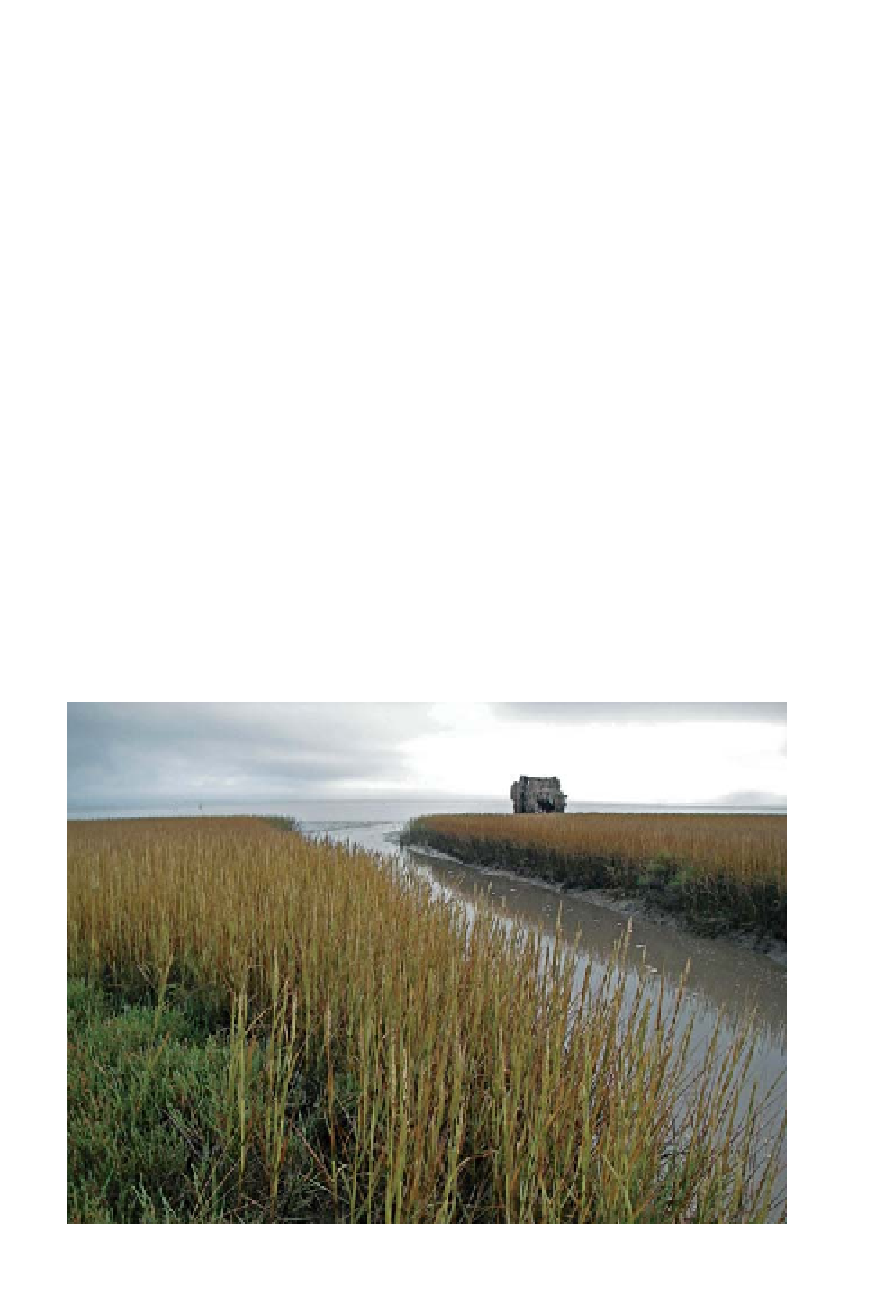Biology Reference
In-Depth Information
“As we learned from Hurricane Katrina, legislators are used to dealing
with large-scale environmental challenges only when they become a crisis.
Our challenge is to create urgency now, and take action before the prob-
lem becomes unmanageable,” says BCDC's executive director Will Travis.
In the face of sea level rise, the region's wetlands—both existing and re-
stored—attain critical importance. They offer essential buffers for more
urbanized zones. A wave entering a wetland from the bay is slowed and
dissipated by vegetation, slough meanders, and elevation changes. Larger
wetlands like Marin's Hamilton restoration site and the South Bay salt
ponds can act like giant sponges, absorbing the brunt of more intense
storms and increased runoff driven by sea level rise. Wetlands are espe-
cially important in the South Bay because they stand between waves and
inland levees, protecting urban areas.
“We have to think about more than just keeping the bay out with lev-
ees and sea walls. We need to be thinking about how to build up our
A decaying duck blind in the marshes near China Camp in Marin County. (Jude
Stalker)

